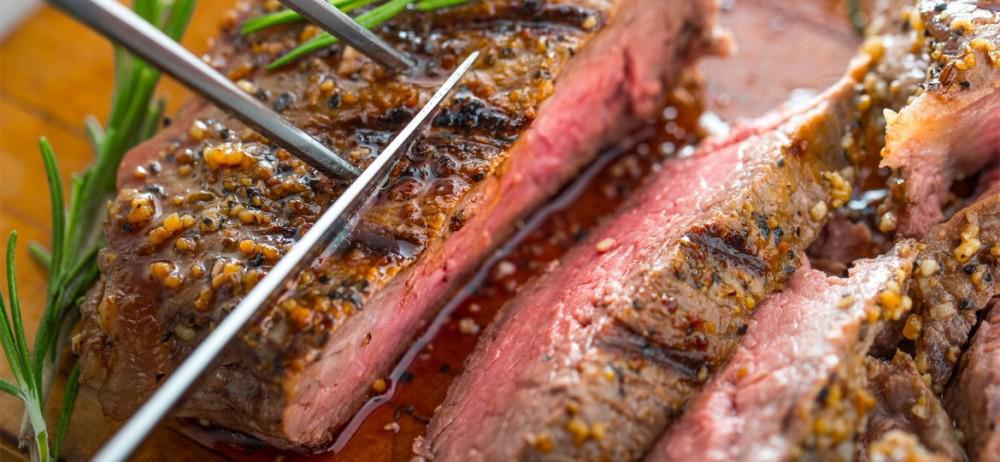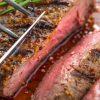
Animal magnetism
Proteins are the building blocks of our amazing bodies. Not only are proteins used to make muscles, tendons, organs, and skin, they are also used to make enzymes, hormones, neurotransmitters and other molecules that are essential to normal function. We learned all this in biology, remember? So why do we need to recall this information?
Proteins help us lose weight and improve body composition while strengthening our muscles and boosting our metabolic rate!
Now we’re talking… Protein can not only help us lose weight, but it can prevent us from gaining weight in the first place. Increasing our protein intake will make it much easier to stick to whichever diet is best for an individual to follow, whether it is high-carb, low-carb or anything in between. And including protein with each meal has also been shown to keep blood sugar and insulin levels balanced.
Proteins are made up of amino acids. Our bodies can produce some, but the rest have to come from the foods we eat. That means we have to know how much to eat and what the best sources are.
Every animal source of protein gives us all the amino acids that our bodies cannot produce (we call these essential amino acids.) Certain combinations of plant proteins can provide us with these nutrients as well. The essential amino acids missing in whole grains, for example, are available in legumes. So consuming both together, as in- black beans with brown rice, will supply you with a complete protein containing all essential amino acids found in animal sources.
Now to spill the beans…
GOOD sources of protein:
Nuts and seeds
Beans and legumes
Soy products (organic, non GMO)- tofu, tempeh
Grains- buckwheat, quinoa, amaranth, spelt, kamut, teff, sorghum
BEST sources of protein:
Meat and poultry (lean cuts, grass-fed or foraging, antibiotic and hormone free)
Seafood
Eggs
Dairy- cheeses, yogurt, milk
Protein should be a part of every meal.
Many people skew protein consumption toward dinner. This leaves breakfast lacking in this essential nutrient. Unbalanced protein intake will not give the hardworking muscles all they need, nor will it help curb our appetite throughout the day. Our bodies also have a limited capacity to store excess protein from a meal. So our steak dinner isn’t going to help with muscle building the next morning. We need to amp up the protein in the morning and throughout the day.
Following are simple ways to include protein with every meal.
1- Breakfast of champions may include any of the following:
eggs every way
greek yogurt or cottage cheese
cereal and homemade granola with nuts and seeds
pancakes, breads, muffins made with flour of almond, garbanzo bean, or buckwheat
2- Add protein to smoothies for a snack or a complete meal:
egg, pea, soy, whey protein powders are available
nuts, nut butter or handful of seeds (chia, and flax taste great) in addition to all of your exotic tropical fruits and berries
3- Top salads with:
fresh or canned tuna or salmon
roasted or grilled turkey, chicken, or fish
beans of course
4- For snacks:
pair fruits or veggies with nut butters
pair fruits or veggies with bean dips
air popped popcorn with grated parmesan cheese
5- For dinner:
Try any lean meat source, beans, quinoa, and greens, and you are spot on. A well-balanced, high protein favorite meal of mine is salmon with a crushed pistachio topping, black rice, and sautéed spinach. For dessert a chocolate pudding with a Silken tofu base.
As with everything, too much or too little is not a good thing.
Too much protein may put a strain on the kidneys. Too little doesn’t provide the building blocks our bodies need to make new cells. We need to create a balance. Just how much is recommended? Everybody has an opinion. So let’s get to the part with the dirt…
DRI (Daily Reference Intake)- Our government has created a committee to establish recommended intakes of nutrients. The committee recommendation is .8 grams of protein per kilogram of body weight or .36 grams per pound of body weight. But research indicates that this is barely adequate to sustain normal body function.
Not enough- scratch that!
MyFitnessPal is a smartphone app and website that tracks diet and exercise to determine optimal caloric intake and nutrients- a great motivational tool! MyFitnessPal recommends protein intake be 20% of your daily calories. But what if you are consuming 500 calories more than you need to per day? We all have those days…. Protein requirements are proportional to body weight and not your caloric intake- so scratch that too!
InBody- You may have seen this device in your local gym. InBody uses bioelectrical impedance to measure body fat as well as lean tissue. The amount of lean tissue (or muscle mass) in pounds is then multiplied by 10% to determine protein intake in grams per day. But with this technique, different individuals with the same amount of lean tissue would be advised to consume the same number amount of protein, whether they are an endurance athlete, a body builder or a couch potato. True however, that it is our lean tissue that is more metabolically active and will have an impact on caloric requirements.
Getting closerrrrr…
National Institute of Health (NIH)- The NIH recommends dietary intake of 1.0, 1.3, and 1.6 grams of protein per kilogram of body weight per day for individuals with minimal, moderate, and intense physical activity, respectively. Your weight in pounds divided by 2.2 gives you your weight in kg. Multiply that by grams per category of activity level and you have it. Here we go- body weight and activity level factored in!
The NIH also recommends that we spread the recommended intake throughout the day. So if an inactive person weighs 150 lbs.,150 divided by 2.2 is 68. 68 times 1 (for minimal activity) is 68 grams daily. 68 grams spread out over 3 meals is approx 23 grams per meal.
Then check the nutrition labels on your food to determine the amount of protein found in each serving. Calculate your daily protein intake by writing down your food for the day, looking at the corresponding nutrition labels to determine its protein content, and add up the amount of protein you consumed in each meal.
Too complicated you say? A general rule of thumb is to be sure that our protein source is the size of the palm of our hand for each meal.
Let’s be clear- I am not a “carb bashonista.” I recommend getting enough protein from varied sources and with each meal as part of a well-balanced nutrition plan, that also includes whole grain complex carbs as well as plant-based fats. For all of its benefits, protein is NOT our bodies’ preferred energy source— carbs and fats are.
Next up: The Case for Carbs!


